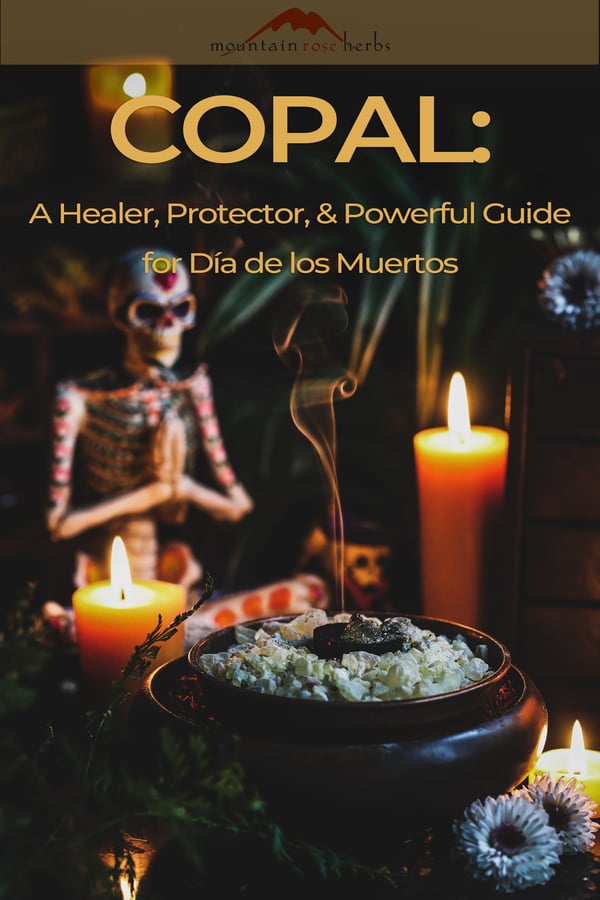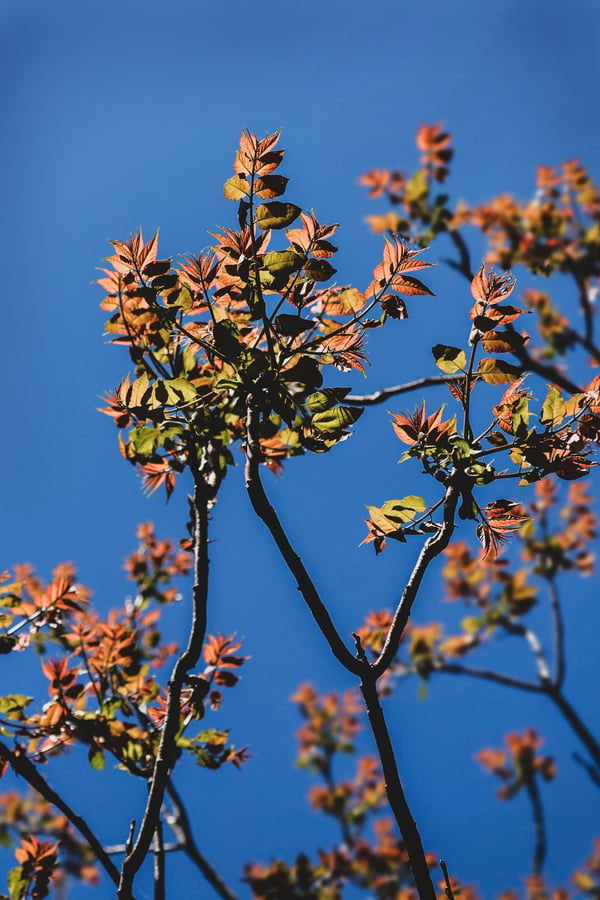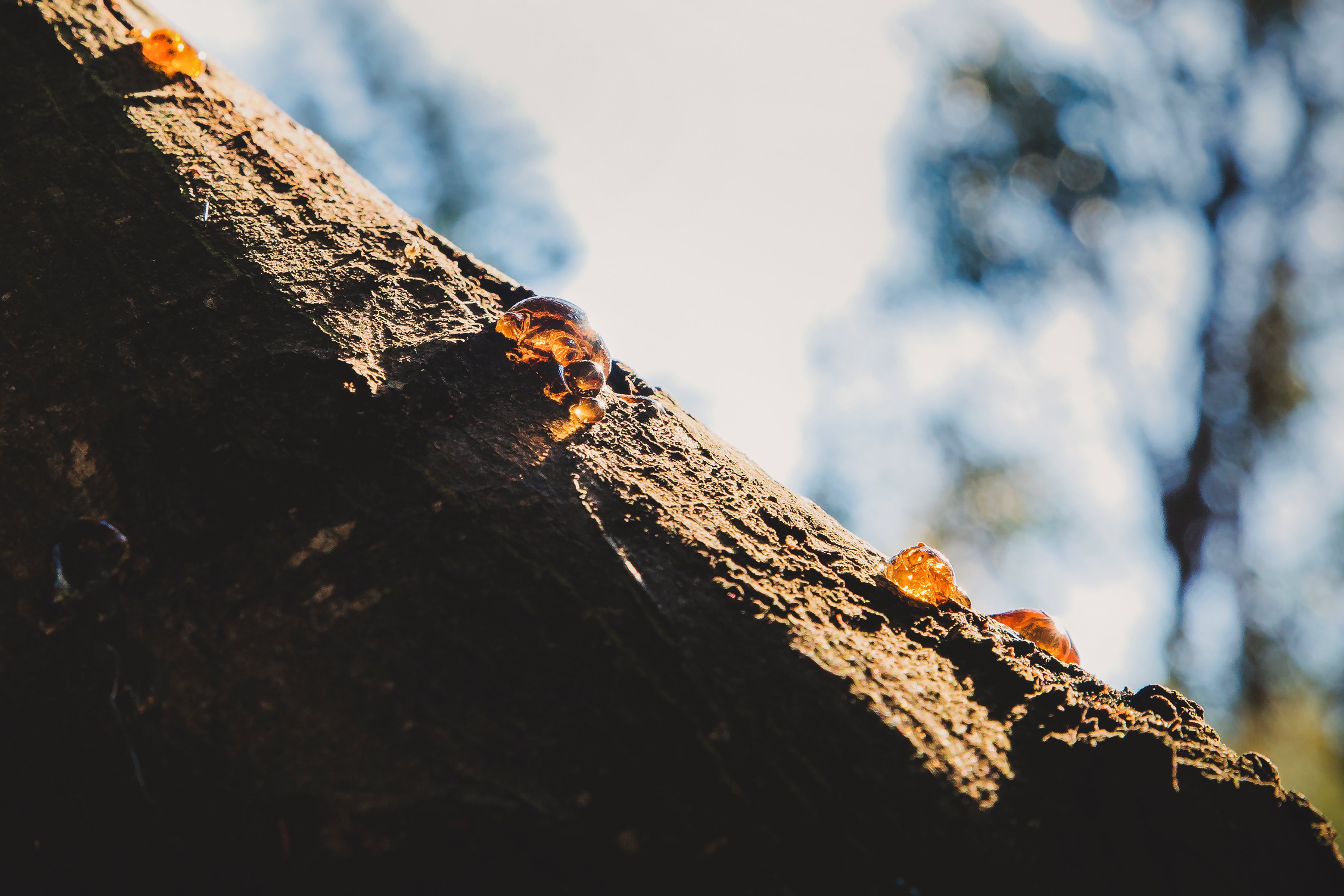I grew up with the understanding that “Life” is Ceremony. Copalli—the Nahuatl word for Copal—is a resin extracted from the Copal tree or Protium Copal (Burseraceae.) This material has been used in Indigenous practices for thousands of years. Today, the use of aromatic resin varies from ceremonially burned incense to other uses.
These are my memories of how as a young child I was introduced to the tree and how to extract the Copalli.
I remember waking up and going to sleep with the smell of Copal. My one-room home smelled like Copalli all day. When Mamá Trini, my maternal grandmother was alive, she was a “Spiritist” or “the one who talks to Spirits.” She used to say “my mission in this lifetime is to be of service.” She did just that in our community in El Salvador. She taught me to show reverence for “Copalli.” Under her guidance I learned to befriend it and how to work with it just like her grandfather taught her. In the summer, we would leave home early morning, and walk a long distance with ofrendas (offerings) for the trees.
As we hike the hill, Mamá Trini always told me stories so that I won’t complain about walking such a long distance. I loved to hear the story about how her grandfather taught her about Copalli and how by her training me, her grandfather was living through her. This gave me purpose and direction at a young age.
There were five Copal trees total on the hill we used to hike, but only two or three of the five were harvested at a time. During each visit, we cleaned around the trunk and removed dead branches while we asked permission to get its resin, which we acknowledged as the “life force” of the tree. If the Spirit of the Copal tree said yes, we sang and danced to it in reciprocity for the “medicine,” another name Mamá Trini gave to Copalli. We then shared our burdens with it and asked it to take them away in its roots to be transmuted by our Mother Earth. If the tree Spirit said “no” we would thank it, give the offerings and leave it to rest until the next visit. The tools we used for the extraction were pieces of maguey (a type of cactus) with twine tied to each end of the maguey piece and looped around a tree branch. With a short “machete,” an instrument to cut the bark of the tree, Mamá Trini trained me to do a very precise perpendicular cut. “The cut must be superficial,” she insisted, to allow the tree to recover from it. If this is not done the tree might “get sick or perish.”
She was very particular to say, “Make sure YOU ARE NOT taking more than you need, never take the first or the last so that it continues to provide the resin for us, and always give profuse gratitude for the Copalli.” She offered extensive lessons on how Copalli is a gift to Sacred Fire, ideal to honor Ancestors, and awaken spiritual connections. How Copalli is very potent and effective for strengthening intentions and is a Divine companion when traveling into Spirit/Invisible realms. These conversations used to make the walk much more pleasant for me as a child.
We would visit mostly two, but sometimes three Copal trees two or three times a week for about a month to harvest enough Copal for three to four months. I started doing it by myself the year I turned nine.
Ritualistic Uses of Copalli
In my household Copalli was used as “purification” of the living space. The idea was to remove “low vibration energy” brought to us by heavy emotions and thoughts.
When I had unpleasant dreams, Mamá Trini would do a “Limpia”—cleansing with the white smoke with the intention that Copalli would dissolve fears and/or other emotional density accumulated in my Mind and Aura field. She would use it to wake up Altars and Ceremonial Places before performing healing Rituals and also to send prayers to Ucux Caj: Nahuatl words for Corazon del Cielo (Heart of Heaven).
For me, Copalli has been a Teacher, a Guide, a Protector, and a Healer. In partnership with Copalli, I have performed cleansing rituals in my home, my office, my vehicle.
Copalli has been a great companion to pray with, excellent for empowering objects and during rituals at birth, death, weddings, and other rites of passage. My connection with Copalli is also a connection to my great-great-grandfather. Despite that I never met him, I feel his energy and blessings like Mamá Trini described that she did.
One of my most favorite indigenous rituals today is Día de Muertos or Day of the Dead. In the Pre-Classical period, Indigenous groups in Mesoamerica celebrated the event for a whole month in August and burn Copalli on their Altars to guide the Souls of their loved ones back home from the Afterlife. In an effort to eradicate the practices during the conquest this got changed to coincide with All Hallows eve on October 31st, All Souls Day on Nov 1st, and All Saints Day on Nov 2nd. In the Post Classical era and now it is believed that on October 31st at noon time the Lord and Lady of Xibalba (The place of Eternal Rest) open the gates as promised to the living for the deceased to join the living to celebrate Life in Ceremony.
Special note: I recently learned that in 2016 the government of Mexico designated Dia de Muertos as a “Cultural Heritage” to the world. After all, we all have Ancestors to honor and celebrate regardless of where we are from.
Want to hear Patricia's latest podcast interview on the herbal radio podcast?
Tune Into the Newly Released Episode!
You may also be interested in:
- Smoke Cleansing Around the World
- Living in the Legacy of African American Healers
- Supporting the Future of White Sage













